
Great Barrier Island lies in the outer Hauraki Gulf, New Zealand, 100 kilometres (62 mi) north-east of central Auckland. With an area of 285 square kilometres (110 sq mi) it is the sixth-largest island of New Zealand and fourth-largest in the main chain. Its highest point, Mount Hobson, is 627 metres (2,057 ft) above sea level. The local authority is the Auckland Council.
Iwi are the largest social units in Aotearoa Māori society. The Māori-language word iwi means "people" or "nation", and is often translated as "tribe", or "a confederation of tribes". The word is both singular and plural in the Māori language. Māori use the word rohe to describe the territory or boundaries of iwi.
Tainui is a tribal waka confederation of New Zealand Māori iwi. The Tainui confederation comprises four principal related Māori iwi of the central North Island of New Zealand: Hauraki, Ngāti Maniapoto, Ngāti Raukawa and Waikato. There are other Tainui iwi whose tribal areas lay outside the traditional Tainui boundaries - Ngāi Tai in the Auckland area, Ngati Raukawa, and Ngāti Toa in the Horowhenua, Kapiti region and Ngāti Rārua and Ngāti Koata in the northern South Island.

Rangitoto Island is a volcanic island in the Hauraki Gulf near Auckland, New Zealand. The 5.5 km (3.4 mi) wide island is a symmetrical shield volcano cone, reaching a height of 260 m (850 ft). Rangitoto is the youngest and largest of the approximately 50 volcanoes of the Auckland volcanic field, having formed in an eruption about 600 years ago, and covering an area of 2,311 ha. It is separated from the mainland of Auckland's North Shore by the Rangitoto Channel. Since World War II, it has been linked by a causeway to the much older, non-volcanic Motutapu Island.
The Musket Wars were a series of as many as 3,000 battles and raids fought throughout New Zealand among Māori between 1807 and 1837, after Māori first obtained muskets and then engaged in an intertribal arms race in order to gain territory or seek revenge for past defeats. The battles resulted in the deaths of between 20,000 and 40,000 people and the enslavement of tens of thousands of Māori and significantly altered the rohe, or tribal territorial boundaries, before the imposition of colonial government in the 1840s. The wars are seen as an example of the "fatal impact" of indigenous contact with Europeans.

Tiritiri Matangi Island is located in the Hauraki Gulf of New Zealand, 3.4 km (2.1 mi) east of the Whangaparaoa Peninsula in the North Island and 30 km (19 mi) north east of Auckland. The 2.2 km2 (1 sq mi) island is an open nature reserve managed by the Supporters of Tiritiri Matangi Incorporated, under the supervision of the Department of Conservation and is noted for its bird life, including takahē, North Island kōkako and kiwi. It attracts between 30,000 and 32,000 visitors a year, the latter figure being the maximum allowed by the Auckland Conservation Management Strategy.

Ngāti Whātua is a Māori iwi (tribe) of the lower Northland Peninsula of New Zealand's North Island. It comprises a confederation of four hapū (subtribes) interconnected both by ancestry and by association over time: Te Uri-o-Hau, Te Roroa, Te Taoū, and Ngāti Whātua-o-Ōrākei. The four hapū can act together or separately as independent tribes.

Little Barrier Island, or Hauturu in Māori language, lies off the northeastern coast of New Zealand's North Island. Located 80 kilometres (50 mi) to the north of Auckland, the island is separated from the mainland to the west by Jellicoe Channel, and from the larger Great Barrier Island to the east by Cradock Channel. The two aptly named islands shelter the Hauraki Gulf from many of the storms of the Pacific Ocean.
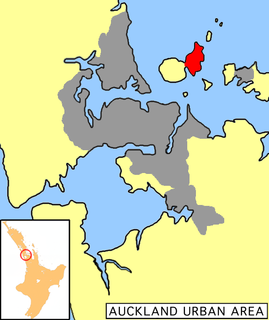
Motutapu Island is a 1,510 ha island in the Hauraki Gulf to the northeast of the city of Auckland, New Zealand. The island is part of the Hauraki Gulf Maritime Park.
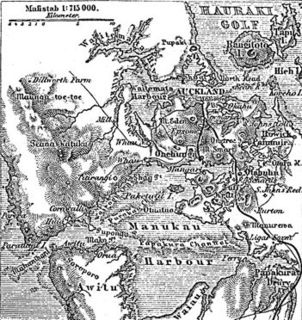
The human history of the Auckland metropolitan area stretches from early Māori settlers in the 14th century to the first European explorers in the late 18th century, over a short stretch as the official capital of (European-settled) New Zealand in the middle of the 19th century to its current position as the fastest-growing and commercially dominating metropolis of the country.
Fullers Group Limited, trading as Fullers360, is a ferry and tourism company in Auckland, New Zealand. It operates in the Hauraki Gulf and Waitemata Harbour. Fullers Group is the latest in a long line of almost continuous harbour and gulf ferry operations based in Auckland since the 1870s.
William Brown was a 19th-century New Zealand politician, merchant and newspaper proprietor.

Eruera Maihi Patuone was a Māori rangatira (chief), the son of the Ngāti Hao chief Tapua and his wife Te Kawehau. His exact birth year is not known, but it is estimated that he was at least 108 years old when he died.
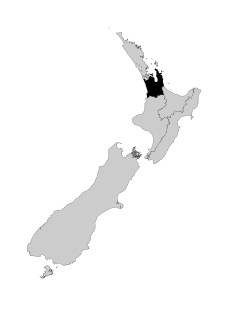
Hauraki-Waikato is a New Zealand parliamentary Māori electorate first established for the 2008 election. It largely replaced the Tainui electorate. Nanaia Mahuta of the Labour Party, formerly the MP for Tainui, became MP for Hauraki-Waikato in the 2008 general election and was re-elected in 2011, 2014, 2017 and 2020.
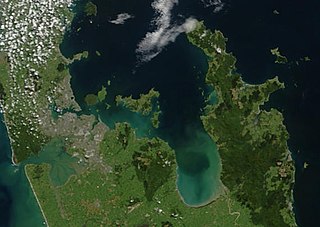
Ngāti Maru is a Māori iwi (tribe) of the Hauraki region of New Zealand. The stronghold of Ngāti Maru has been the Thames area. Ngāti Maru are descendants of Te Ngako, also known as Te Ngakohua, the son of Marutūāhu, after whom the tribe is named.

Ngāti Pāoa is a Māori iwi (tribe) of the Hauraki region of New Zealand. Its traditional lands stretch from the western side of the Hauraki Plains to Auckland. They also settled on Hauraki Gulf islands such as Waiheke.

Ōtara is a suburb of South Auckland, New Zealand, situated 18 kilometres to the southeast of the Auckland CBD. Ōtara lies near the head of the Tamaki River, which extends south towards the Manukau Harbour. Contemporary Ōtara is surrounded by the suburbs of Papatoetoe, East Tāmaki, Clover Park and Flat Bush. The suburb is noted for its proportion of Pacific Islander residents, who make up 78% of the Ōtara population, and its unusually low number of European New Zealanders (Pākehā) residents (10%).
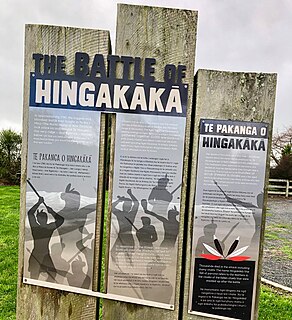
The Battle of Hingakākā was fought between two Maori armies of the North Island, near Te Awamutu and Ōhaupō in the Waikato in the late 18th or early 19th centuries, and was reputedly "the largest battle ever fought on New Zealand soil". One army was from the south of North Island and the other was from the Tainui confederation of central North Island. Both armies included allied forces from several different hapū and iwi.
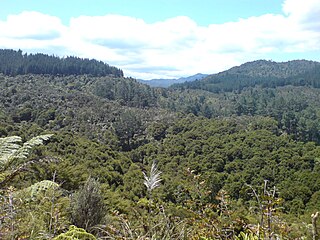
Ngāti Rongoū is a Māori iwi (tribe) of the Coromandel Peninsula in New Zealand.

Karaka Bay or Waiarohe is on the western shore of the Tāmaki River mouth in the suburb of Glendowie, Auckland. The bay is bordered to the north by Te Papa a Tamatera and looks out to the islands of the eastern Waitematā Harbour: Rangitoto, Motutapu, Motukorea, Motuihe and Waiheke as well as to Musick Point across the estuary. It is accessed by boat or by a steep path that winds down the hill from the end of Peacock Street; there is no road access to the bay itself. This lack of road access has given Karaka Bay a unique sense of identity; it is unlike anywhere else in Auckland.



















